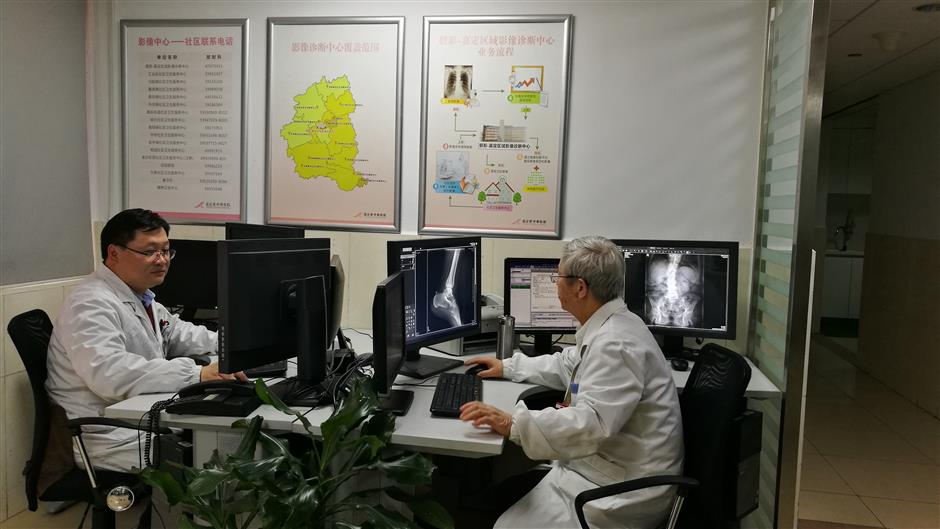'Cloud medical care' to ease patient burden
The suburban Jiading District has applied artificial intelligence scanning technology in a system linking hospitals and community healthcare centers.
Called "cloud medical treatment," the system is part of the district’s healthcare reform. It has been nominated for an award as one of Shanghai’s Top 10 medical innovations.
The new system links 13 community healthcare centers and their four branches with four hospitals, enabling them to share data and images.
Jiading, on Shanghai’s northwestern outskirts, has a population of about 1.6 million, 970,000 of them migrant workers. Seeing a doctor in a hospital can often be an inconvenience because of distance, work hours and lengthy waits.
The new scanning devices will allow residents to get scans at a healthcare center close to home. The average time for a scan has been cut to only four minutes.
A patient's image will be automatically uploaded and transferred to an imaging center set up at Shanghai Jiading District Central Hospital three years ago. There, the image can be viewed by medical professionals, who will relay a diagnosis back to the healthcare center online within 30 minutes.
The district's “cloud medical network” has also been expanded to include remote areas of China in Qinghai and Yunnan provinces.
Doctors working at the central imaging center in Jiading handle, on average, more than 1,000 scans a day from community healthcare centers in the district and other provinces. On the busiest days, the number may reach 1,600.
According to Dr Liang Kaiyi, chief physician in the hospital's radiology department, the system starts a 30-minute countdown after a patient scan is concluded. Without the system, it could take two hours to read a non-emergency scan.
The system signals urgent cases so that people in critical situations will get their scans read first.
"In the past, radiologists administered the scan, read the results and wrote up their diagnoses,” said Liang. “But now doctors in healthcare centers do the first step, which reduces the workload of radiologists and increases efficiency.”
Cai Qiying, a general practitioner at a community healthcare center, said the new system saves residents time and money, while guaranteeing the quality of the images.
“Several years ago, there was a patient who had a fracture and underwent a scan at a medical institution,” Cai said. “It was a wet day when the film was delivered to us, and rain ruined part of the film. Now there is no need to worry about that.”
He added, “Last month, a patient sprained his arm while chopping firewood. He received a quick scan, and soon after I could see the image on my computer."
Elderly people living in Huating Town near the border with Zhejiang Province praise the new system.
“We live far from a hospital,” said one. “And as we get older, our health deteriorates. It’s a big effort for us to get to a hospital to see a doctor. Now we can just go to our local health center and get a scan.”
Nearly 194,000 residents in Jiading have local family doctors, and more than 70 percent of them are 60 years or older.
The new imaging system was co-founded by the Jiading government and medical equipment manufacturer Shanghai United Imaging Healthcare.
United Imaging, which is developing patient-friendly, artificial intelligence imaging equipment, said it’s hoping to expand their use in more regions of China.

Two doctors read patients’ X-ray images transferred by the system at the imaging center.
















